Vakog Roulette
Hanna Moren-Skowronska, Poland
For big and small,
young and old,
for all -
to share,
to join
and to enjoy.
Menu
Introduction
Editorial
Picture:'Ple-peo talk at me, few to talk to, few...'
Poem
Comments on the picture
Comments on the poem
Feedback and plans for the future
This article consists of five parts. The parts are presented at random order as different fields on a roulette wheel. Everybody is free to build up the whole article's layout, following their own, most natural organisational preferences.
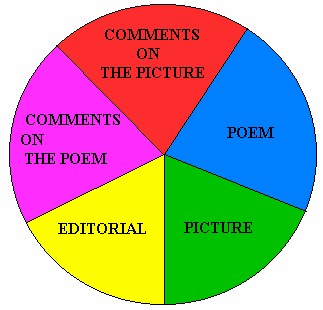
Spin the wheel and see how you like this form of communication gambling. You risk nothing.
At worst you will conclude that the main-stream teacher's books, with cohesion and coherence of instructions to follow, are more useful.

Are you a doer? Then you know the feeling .You find everything clear, obvious, self-evident; nothing is redundant in the uniqueness of the moment. Because whatever end can instantly make a new beginning; whatever gets lost, simply finds its new place. For you too short, for me not long enough - seems just right to another person; or to both of us on another person, in different circumstances, viewed from a different angle or put on when the right fashion comes.
When this is how you view everything that surrounds you , taking action is not a problem . You just take the first step , and the next depends on the result of the first . After all , if we accept that life can be harmoniously discordant or consistently inconsistent, there is no other way but keep taking action and appreciate results . Life is generous .There can be many results offering options for further decisions . Even failure has got a positive effect - if you treat it as your own case study to learn from . That's what doers are like when it comes to acting.
But what are doers like when it comes to theoritising on reality?
Then having to start makes you see red and hear the ironic voices of the masters:
' Do you know to whom the bell tolls ?' ' To the man of indecision.'
And you clench your fists, and grit your teeth and procrastinate sitting down to writing an article on ' My Own-Stream Communication Aids - Preparation and Feasibility Study.'
In the meantime you prepare and test a bunch of new Own-Stream Aids to make sure the article will tell the truth and nothing but the truth.
The procrastinated truth is that: no matter what level of English your students represent, or what age they are, or how serious the course orientation is - they do not deserve being approached as living fossils studying Latin manuscripts. If you happen to notice some of them on the way to the relics display, call them back . And avoid drifting there yourself.
How? It is easy. Liven up the coursebook. How again? Show interest in your students. Let them show interest in you. Let yourself and your students exchange views on what is interesting in life. Then take a pinch of yourself, a pinch of your students, a pinch of a lesson context, a pinch of the course contents to be discussed or revised, and stir, mix or toss until you obtain a desired result.
My own-stream aids aim at letting all students, including adults, keep up their natural VAKOG sensory styles or enjoy discovering The Four Quadrants grid. It does not matter if the trendy expressions used in the previous sentence do not ring a bell. They simply mean that every person is an individual who needs to be recognised as such, facilitated and encouraged to further growth. And that some individuals feel better when they have a sense of belonging. So for them personality types and learning styles have been devised to enable them identifying themselves with a group.
You the Teacher and me the Teacher, for whom access to KNOWLEDGE is becoming easier and easier, are responsible for identification of the teaching / learning environment and taking care of its ecology. Ecology of communication - be it verbal, written, or carried out in any other possible ways.
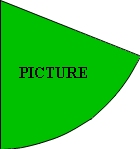
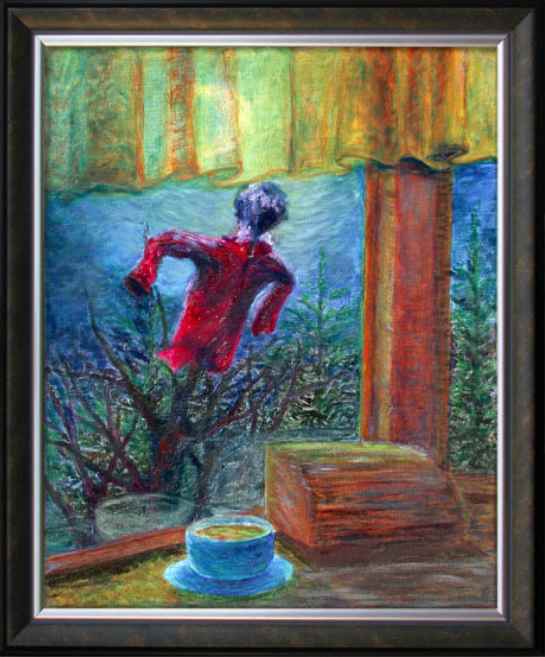
How could you use the picture to ease the communication process in the teaching you do?
As a lead-in or a follow-up? Or perhaps the core of the lesson?
Do you think this picture has the potentials to trigger discussion ?
Or would you rather use it as a flashcard to elicit some type of vocabulary ?
What age group students would you use it for?
What English levels can the picture be suitable for?
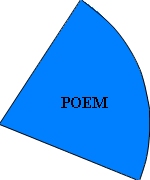
A scarecrow up a cherry tree
longed for a day to be free
to scare or not to scare
and if scare then whom ?
A scarecrow scaring starlings ? Scurrilous lie ! Common sense doom !
Harbinger of absurd boom ! |
Birds, birds, birds. I've got enough !
I wish Hitchcock - great and tough -
were here
to lend me his ear.
That's what he would hear : |
" All feathered species
make me think of wishbone wishes.
Wishbone makes me think of dinner
which makes me thinner and thinner. |
Back to wishbone let me wish
the bird had made a tasty dish
and hadn't suffered much
being prepared as such. |
For the future let me wish too
I wouldn't be talked at but talked to,
I wish Mr. Hitchcock would be born as Hitchfish
And would offer no wishbone for a gambler's dish." |
I am what I am but I wish I weren't.
I don't wish I were butter,
I don't wish I were a fly,
I wish I were a butterfly.
(But not Madam - she couldn't fly).
|
To suit your own classroom needs...
' Take a pinch of yourself and a pinch of your students. Add a pinch of the lesson context and language skills or elements to be practiced. Shake or stir well ...'

| Pictures or paintings have unlimited communicative potentials. Its superficial layer offers visual stimuli, which are a welcoming, non-invasive invitation for further communication. |
| The picture must be powerful enough to make your students plunge willingly into the underlying layer of imagination, associations and suppositions. In other words, the picture that is meant to make your students communicate, must offer something that would involve different senses or types of reasoning to get them interested and inspired. Moreover, describing or interpreting pictures bear no burden of correct vs. incorrect answers. |
For the purpose of this article , I used the picture of a scarecrow in the advanced group of 17+ to practice speaking for CAE examination. I suggested they 'compare and contrast ' the painting of my scarecrow and their own free association images of any scarecrows.
There were scarecrows from fairy tales and from holidays in the country. Both the scarecrows and their background were painted with words and sounded really picturesque . What is more, my students enjoyed retrieving their memories and verbalising them. |
| After the exam practice they wanted to know the story of the scarecrow in the picture. Actually, this one has been my companion since last June. When the green of the cherry tree gave way to the red, I knew it would soon become the venue of the annual feast for starlings. And then I had a brainwave: I will make and install a scarecrow. I dressed him up and felt quite thrilled climbing up a thin branch and pushing him through thick leaves and cherries to the top. Just imagine a respectable lady in her late 40-ties praying the branch wouldn't break! |
|
|
|
By the way, have you ever had the chance to feel how a tree responds to the gusts of wind? Unforgettable experience of being a bird (despite your actual weight).
To suit pictures to your own classroom needs, remember the recipe:
'Take a pinch of yourself and a pinch of your students. Add a pinch of the lesson context and language skills or elements to be practiced. Shake or stir well.....'
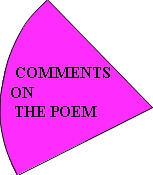
|
|
The scarecrow poem was written for a particular adult
course and was meant to promote feasibility of 'wish'
structures in the use-of-English recycling context
( harbinger, scurrilous, wishbone, lend ear,
talk at vs. talk to ).The poem served its purpose,
recycled elements were identified, a quick flashback
exercise helped to retrieve the original contexts.
And it was fun. |
|
For the purpose of this article I tried the poem with an advanced group of teenagers. This time the poem had no reference to the ideas or vocabulary covered so far in their course. There was no pre-teaching. I waited for their comments, which were as follows:
- it is to practice 'wishes'
- it is enjoyable although not completely clear
- what do scurrilous, harbinger and wishbone mean?
- what is the difference between talk to and talk at?
- can 'lend me your ear ' be used in everyday conversation?
- Hitchcock and Madam Butterfly merely rang a bell.
Well, Hitchcock and Madam Butterfly will be researched by two volunteers for the next lesson. I wonder if the presentations will take the rhymed form. Sometimes they do.
To choose or write poetry for classroom use remember the recipe : 'Take a pinch of yourself and a pinch of your students. Add a pinch of the lesson context and language skills or elements to be practiced. Shake or stir well and.....'

Please check the NLP course at Pilgrims website.
Please check the Creative Methodology for the Classroom course at Pilgrims website.


|